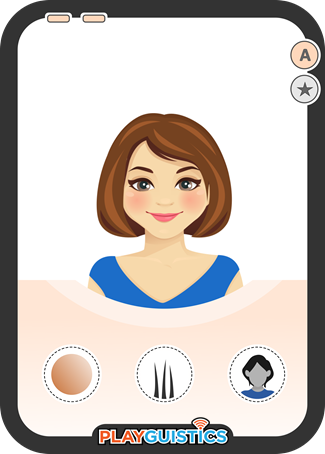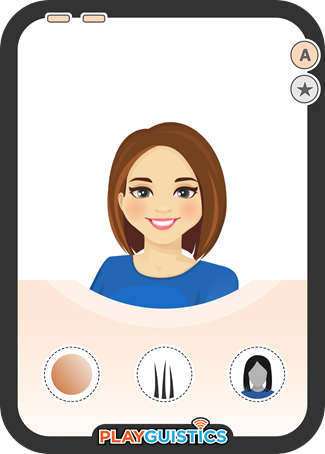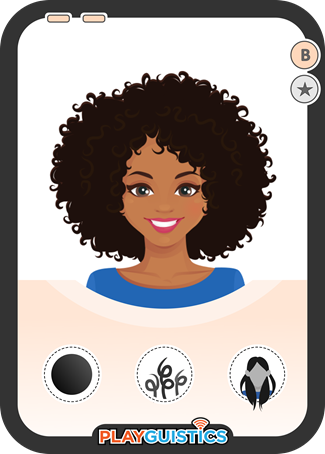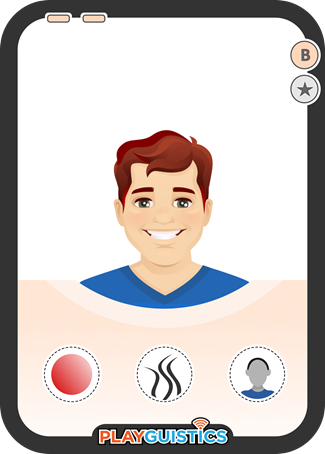About This Activity
|
Overview Hair Characteristics Cards is a speaking activity that offers students a fun way to learn how to describe different hairstyles. With this game, students can become adept at identifying specific hair characteristics and using appropriate adjectives to describe those characteristics. This is a deduction card game with a different combination of hairstyle characteristics on each card. Players need to use their verbal skills to deduce which of the character on the cards laid out in front of them matches the character on the "secret card" in their activity partner's possession, by using the sentence structure "Is your hair _________________?" Learners will be able to play this game after memorizing as few as 12 vocabulary words. Currently, there are 2 sets of cards are available for this game. Set A contains 18 cards featuring hairstyles that can all be differentiated from each other based on hair color and length alone. Set B contains an additional 9 add-on cards that can used along with the cards in Set A. The additional inclusion of these 9 cards makes it necessary to use hair-type (straight, wavy, and curly) to differentiate between the different hairstyles depicted in the complete collection of 27 cards. |
|
|||
|
Hair Characteristics Card
|
Hair Characteristics Card
|
Hair Characteristics Card
|
To help with avoiding learner confusion, each set of cards comes in three different versions. Version 1, includes icons for each of the three hair characteristics categories - color, type, and length. Version 2 includes icons only for the more difficult to identify hair characteristics. This varies for each card. Version 3 includes no icons at all. It is recommended that teachers first introduce either Version 1 or Version 2 (depending on the age and ability-level of their students) and then later transition their students to using Version 3 once the students have become more familiar with the differences between different hair-types and lengths.
|
A Version 1 Hair
|
A Version 2 Hair
|
A Version 3 Hair
|
|
How To Play Materials: Two identical sets of 18 Hair Characteristics Cards are needed for each pair of two participants. This means two sets of Set A. To add extra complexity, the 9 cards in Set B can be added to the each set of Set A so that learners can learn to differentiate hairstyles based on whether they are curly, straight, or wavy. Time / Game Round: 1-3 minutes
For more detailed instructions for how to print, prepare, and introduce card-based deduction games like this one, click the blue button below. |
|
|||
Printing & Preparation Instructions
Words to Learn Before Playing
The Core Vocabulary Words listed below are all words that students should learn BEFORE playing this game. Students will only need to learn the words listed for Set A to play this game with that set of cards. However, to play the game with Set B, students will need to learn the words for both Set A and Set B.
| Core Vocabulary Words Used in Activity | |||||||||
| Card Set A (18 Cards) | black, blonde, brown, gray, hair, long, mid-lengthed, red, shoulder-lengthed, short, white | ||||||||
| Card Set B (9 Cards) | curly, straight, wavy | ||||||||
Words to Learn While Playing
The following words will be used to the play this game (with every available set of cards). However, these words don't need to be pre-taught. These words can and should be learned WHILE playing the game.
| Vocabulary Best Learned In Context | |||||||||
| Used With All Sets | is, isn't, it, no, this, yes, you, your, | ||||||||
Sentence Patterns to Use While Playing
The following sentences and sentence patterns are recommended for use while playing this game. The best way to teach these sentences, is to use them in context while introducing the game and demonstrating how to play it.
| Standard Use Sentences and Sentence Patterns |
| Is your hair _________________? |
| Yes, it is. / No, it isn't. |
| Is this you? |







